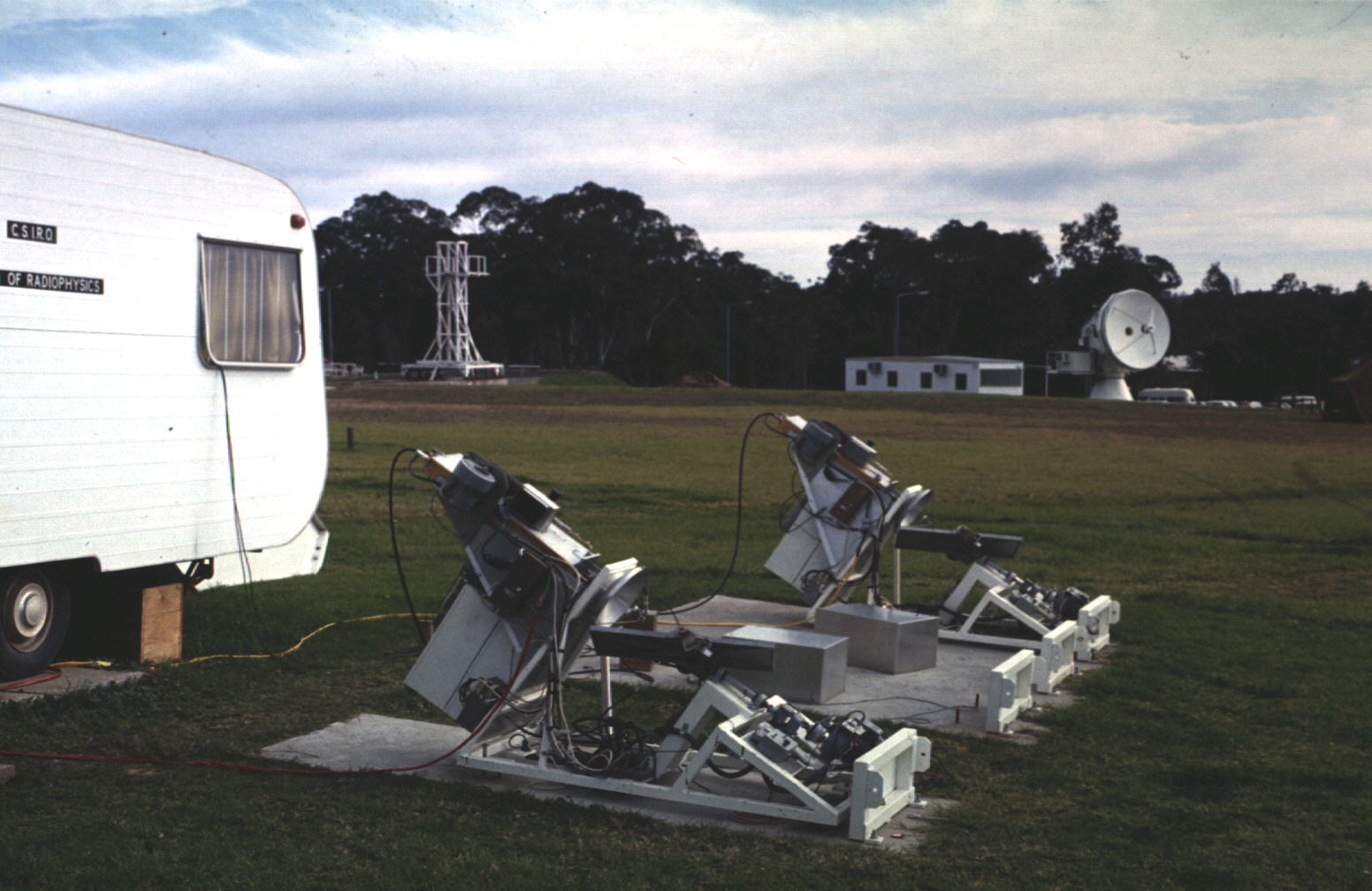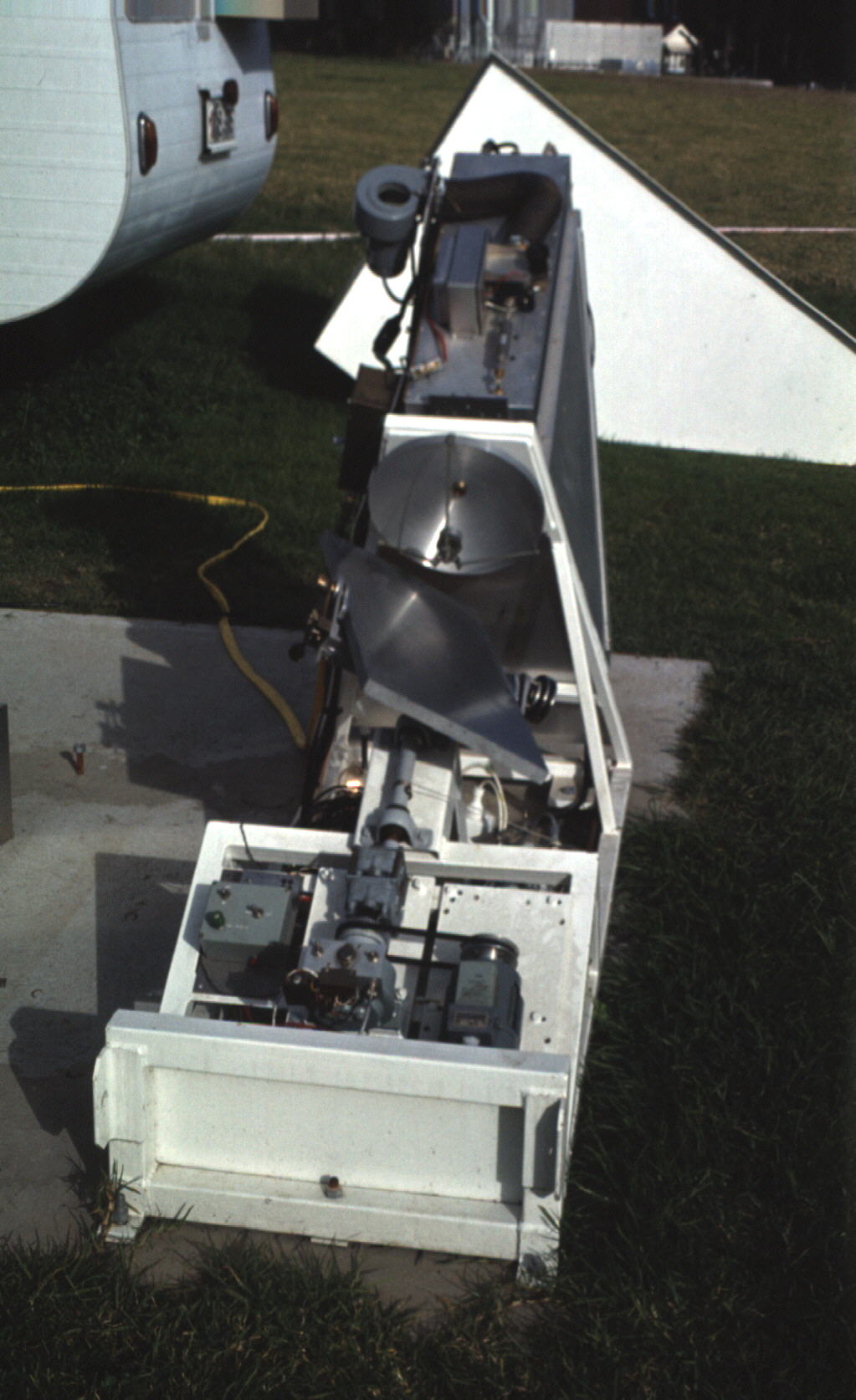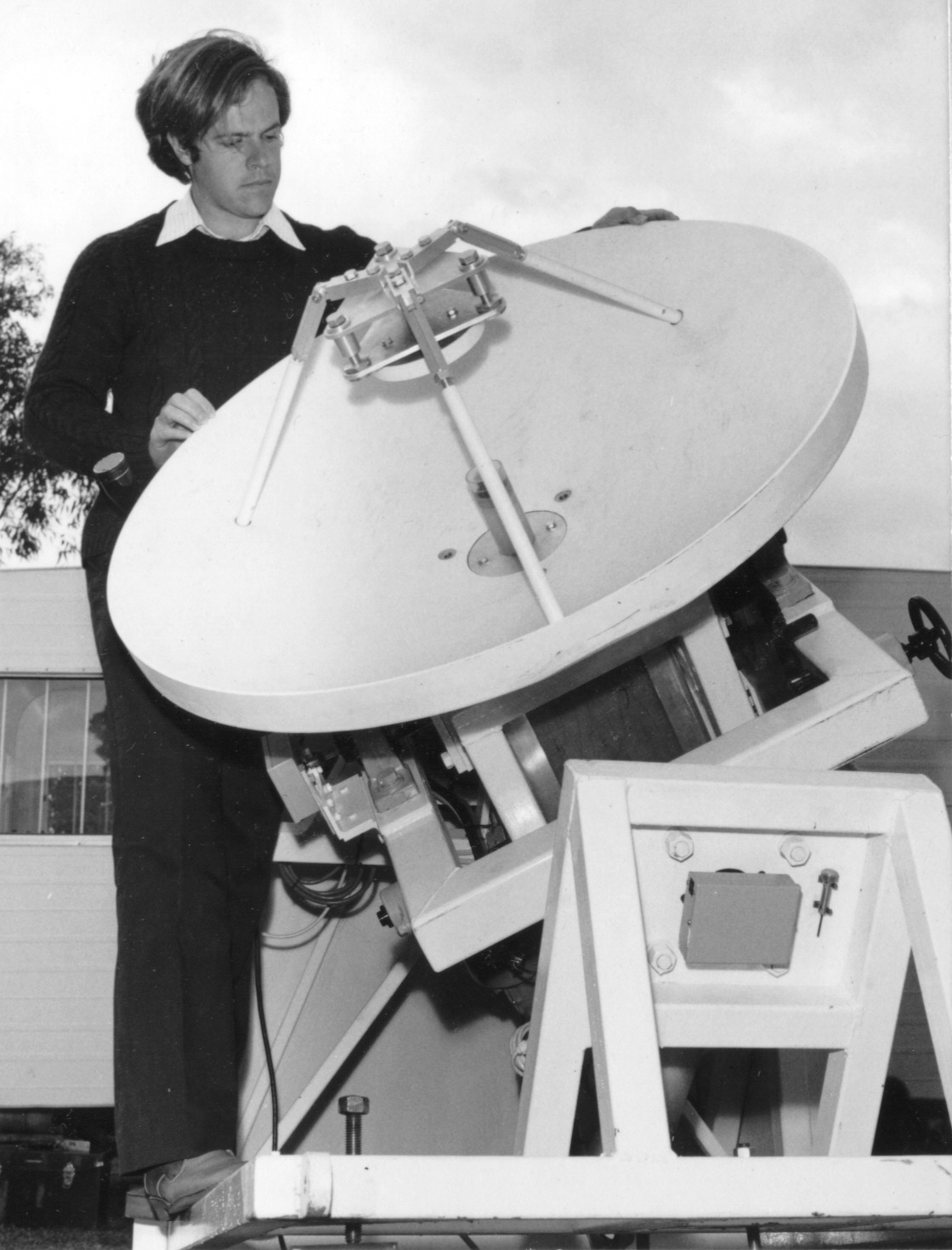Millimetre-wave solar radio astronomy in the CSIRO Division of Radiophysics, 1973 - 1977
I read with interest the letter from Stephen White in the June 2001 edition of the ATNF Newsletter, pointing out that the current 3-mm upgrade of the ATCA, while providing powerful new facilities, will not provide the first 3-mm interferometer in the Southern Hemisphere. I would like to thank Stephen for his letter. This article aims to present a more extensive outline of the mm-wave solar radio astronomy instrumentation and research at Radiophysics during the 1970's - projects that also shaped my later career in mm-wave engineering.
The mm-wave radio telescopes for solar radio astronomy were designed and developed during my PhD research project, between 1973 and 1977 at Marsfield, under a collaboration between the Department of Electrical Engineering at Sydney University and the Division of Radiophysics. To the best of my knowledge, it was the first joint PhD project of this type, with Norman Labrum of CSIRO and Godfrey Lucas at Sydney University providing supervision. Staff from CSIRO who gave engineering and technical assistance included Chris Smith, Keith McAlister, Keith Anderson and Claude Scarpellino.
These projects aimed to determine the distribution of millimetre wavelength brightness over the quiet sun in order to test the validity of existing models of the solar chromosphere. Limb brightening had been predicted by these theoretical models, but earlier mm-wave observations had given widely varying and conflicting results. Two mm-wave telescopes were designed and constructed during this project.
The first, shown in the photographs in Figures 1 and 2, was a phase-coherent, two-element interferometer, using a pair of 30-cm-diameter, cassegrain-fed paraboloids in a ceolostat configuration. It was designed to operate over a range of east-west oriented baselines with spacing varying from one to six metres and was located close to where the near-field antenna ranges are today at the Marsfield site. To the best of my knowledge, it was the world's first 100-GHz variable-baseline, two-element coherent interferometer for radio astronomy.

Figure 1: The 100-GHz interferometer with the 4-m telescope in the background.

Figure 2: One of the interferometer antennas plus associated receiver electronics.
A novel dual-mode feed-horn coupled the signals from each dish to a double-conversion, double-sideband receiver. The signal was first fed to a waveguide-mounted gallium arsenide Schottky diode mixer, which was followed by a low-noise, high gain transistor amplifier operating over the 1150 - 1250-MHz band. The second IF amplifier was centered on 234.8 MHz. The overall double sideband noise temperature of the receiver was about 8000 K, with 85 dB gain before cross-correlation.
Klystron tubes were used to provide local oscillator (LO) signals for the mm-wave mixers. A complicated phase-servo system was developed to phase-lock the two klystrons to reference signals at a sub-harmonic (near 2.9 GHz) of the 98.8-GHz LO frequency. Stability in relative phase of these pilot tones was ensured by deriving them from a mixer, which combined two 482-MHz signals (offset slightly in frequency) transmitted in opposite directions along a cable linking the two LO systems. The relative phase was then nearly independent of the electrical length of the connecting cable and the klystrons were maintained in-phase to a precision of about 10 degrees rms under ambient temperature changes.
Delay compensation was implemented by manually inserting lengths of cable in the IF channels. The correlator consisted of a pair of doubly-balanced mixers connected to provide "sine" and "cosine" baseband outputs. The correlator outputs were digitised so that fringe-fitting and integration could be carried out using a very early model "Alpha" mini-computer.
Norm Labrum and I used the interferometer to synthesise an image of the sun at 3-mm wavelength. The angular resolution achieved was of the order of 1.6 arcminutes. In order to present a more complete picture of the millimetre-wave brightness distribution, additional information was obtained from observations of the solar disc during the total eclipse of 23 October 1976 from a location near Stawell in Victoria. Measurements of the millimetre-wave brightness were made using the second telescope, a 1-m diameter dish, which was set up to track positions on the solar disc at the four points of contact. One of the interferometer receivers was modified for use in the eclipse work. The antenna used for the eclipse observations is shown in Figure 3, along with a very much younger version of the author.

Figure 3: The author with the 1-m antenna used for 100-GHz eclipse observations
The interferometer and eclipse results, taken together, indicated that the solar brightness distribution at a wavelength of 3-mm was constant over the disc except for a narrow bright ring at the solar limb. The degree of brightening was observed to be about 20% above the intensity of the central disc and its angular extent was about 20 arcseconds at the limb. The detail of the limb spike was determined primarily from the eclipse experiment, since the angular resolution achieved with the interferometer was insufficient to resolve this narrow feature. The synthesis result confirmed that the brightness temperature distribution is flat from centre to limb to within ± 5%, with the principal limit on the resolution being the effect of weak localised sources associated with solar active regions, which are almost always present.
This project was a very exciting and challenging part of my research experience - a time which I will never forget and which formed the foundation of my further career. Plans were well advanced in 1976 to construct a larger interferometer for solar work, based upon the smaller system, which combined the 4-m Krupp dish with a new 2-m diameter reflector, which was made in Australia. Unfortunately, when I left CSIRO to take up a position with NRAO in 1977, the interferometer work lost impetus because of funding and staff difficulties at that time. It was never taken very much further. However, you can still see the remnants of the 2-m dish mount out on Bowen Field at Marsfield and the 2-m diameter aluminium reflector still lies in a shelter down behind the workshop!
John Archer
Science Fellow, ICT Sector
CSIRO Telecommunications and Industrial Physics
(John.Archer@csiro.au)
